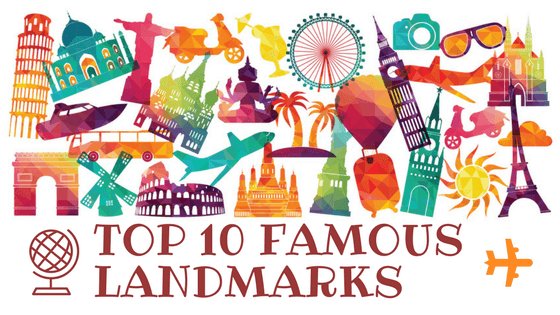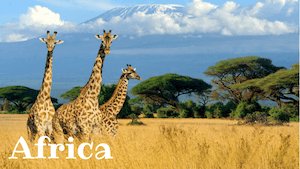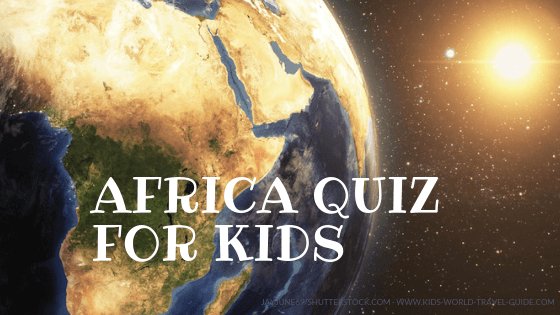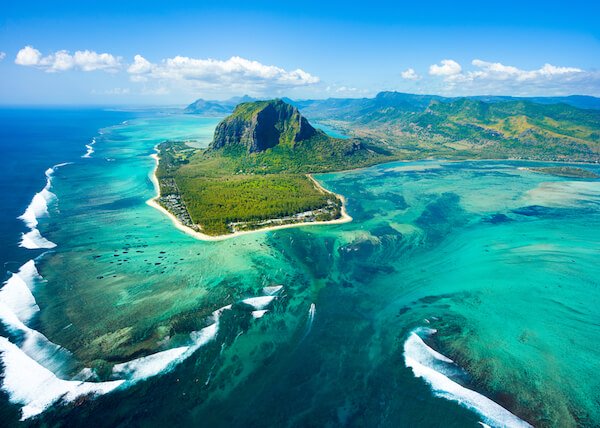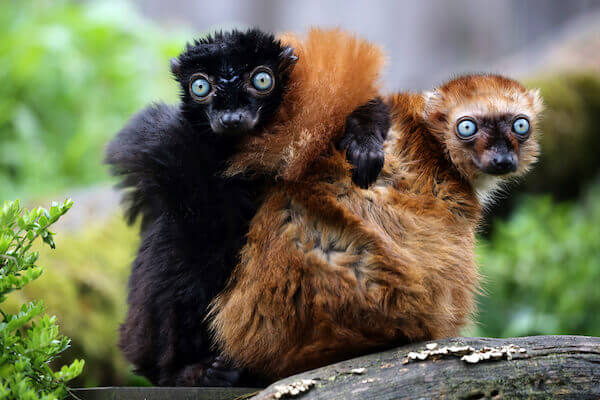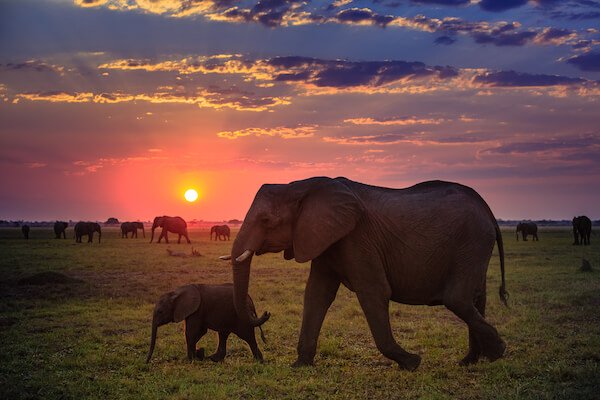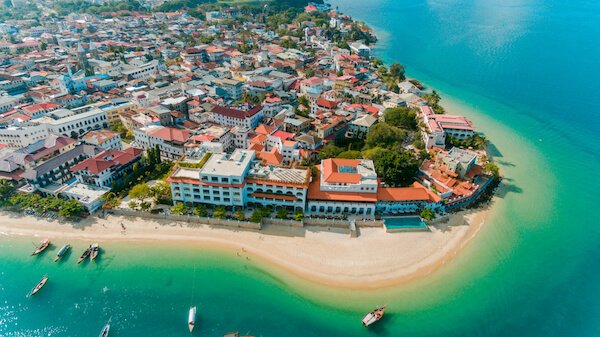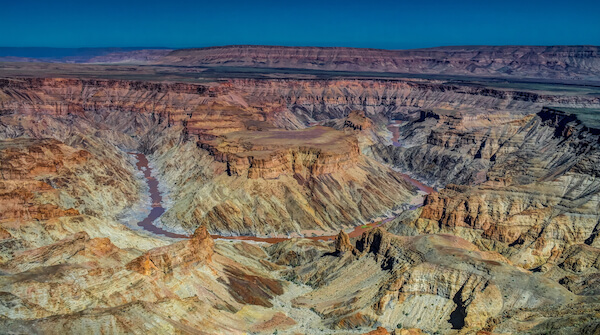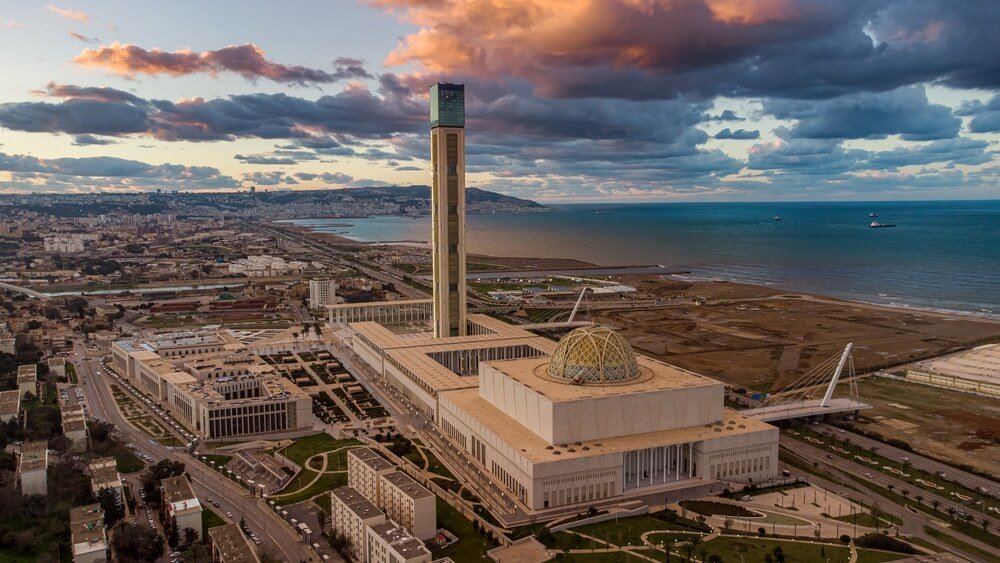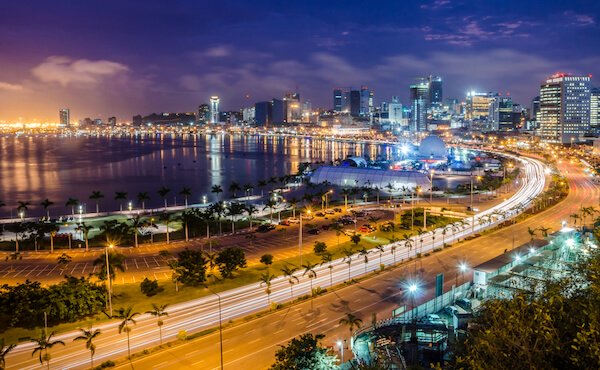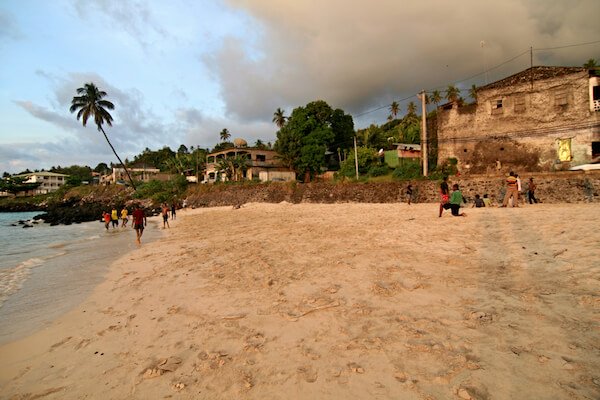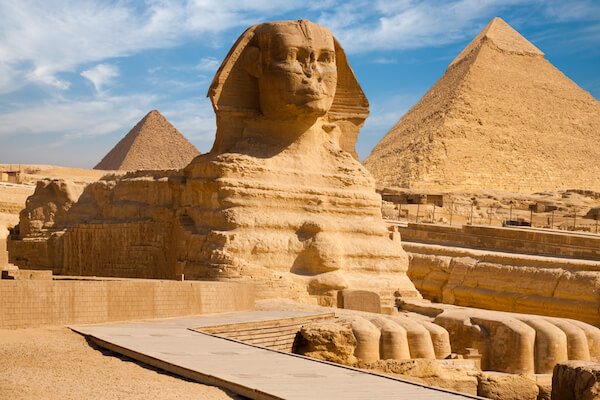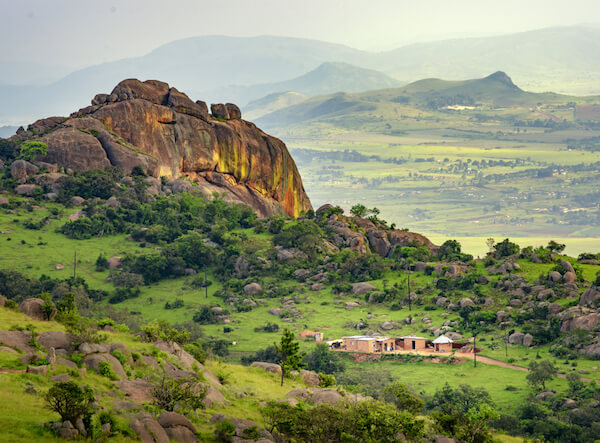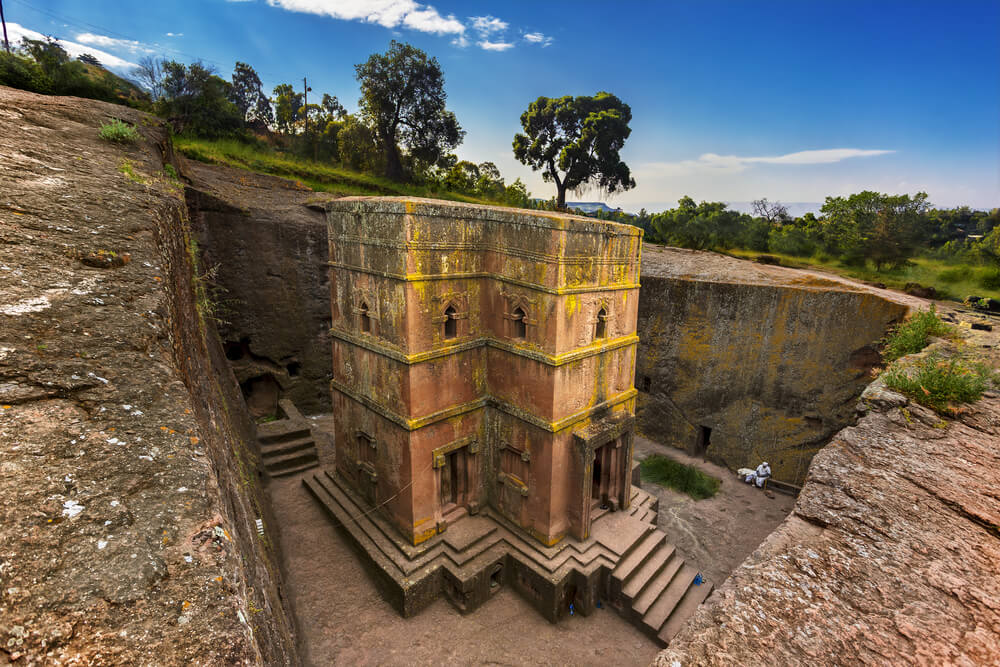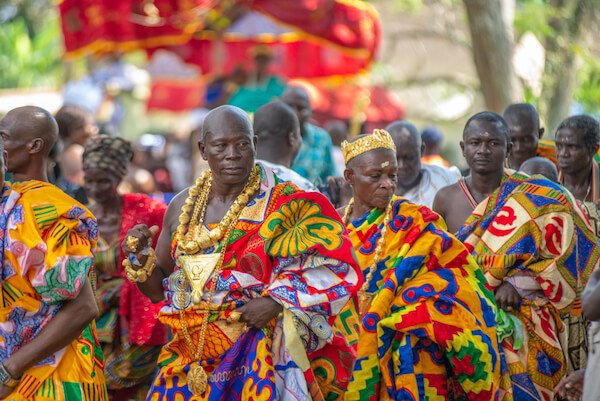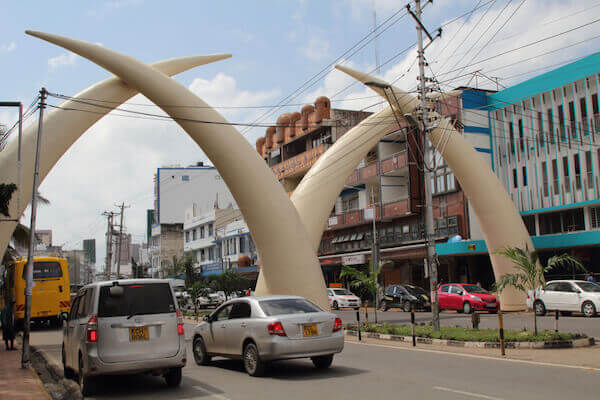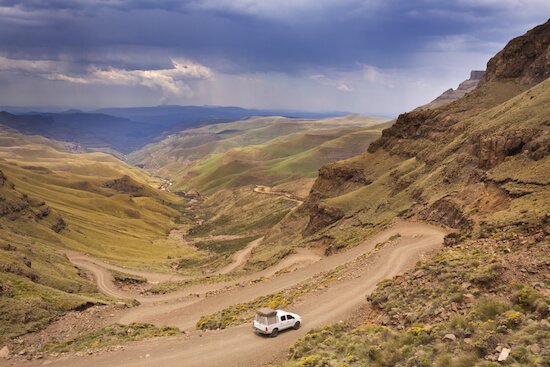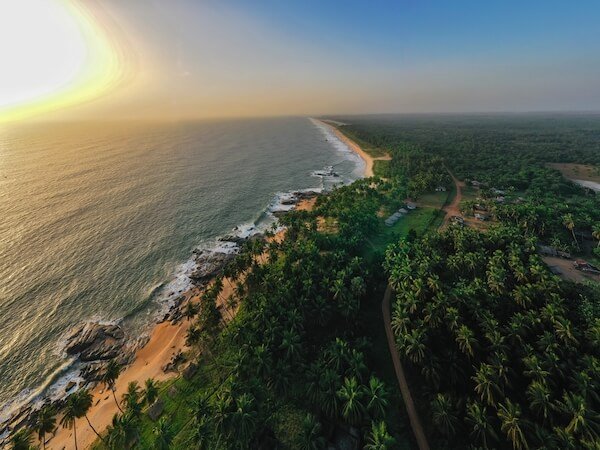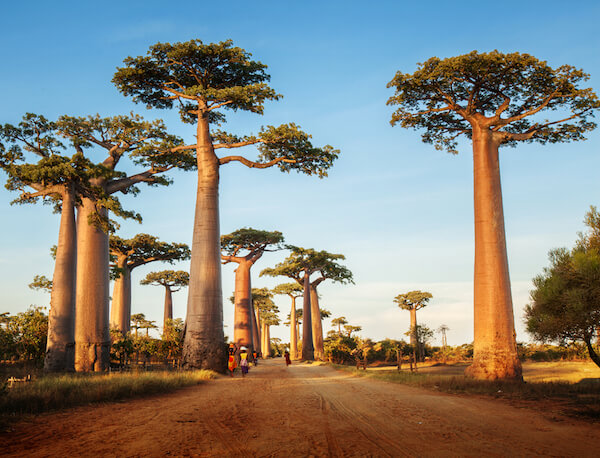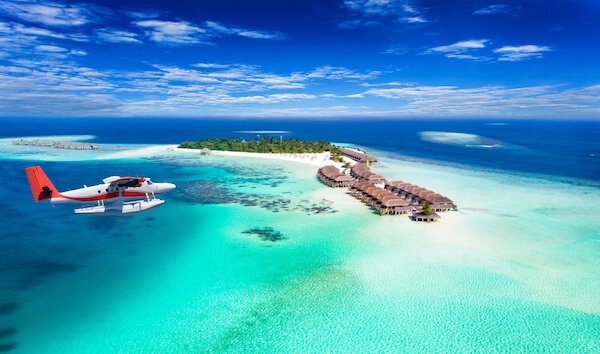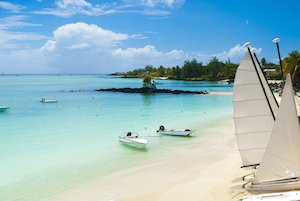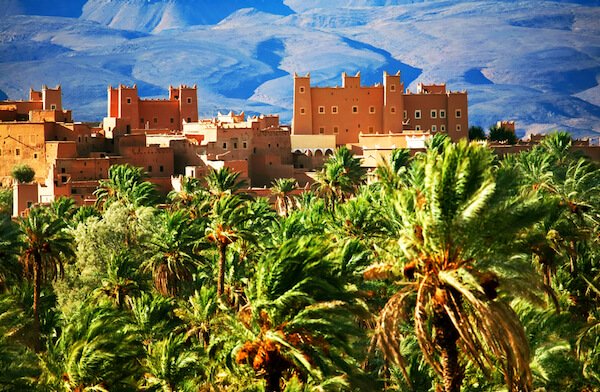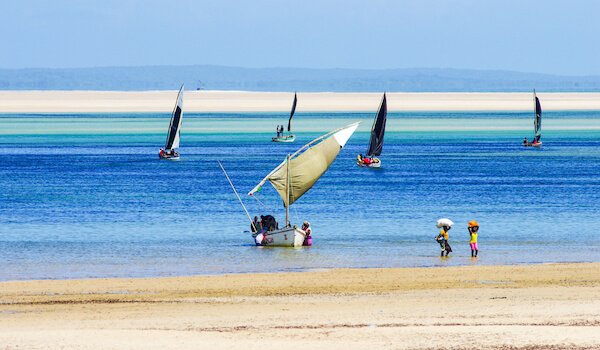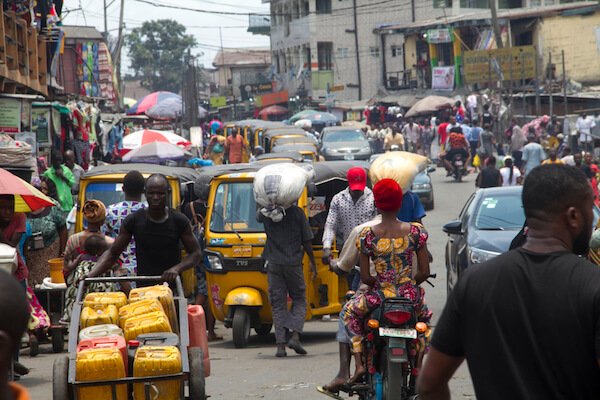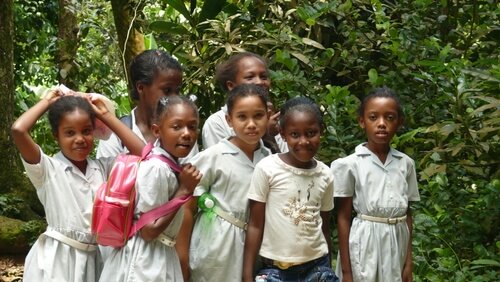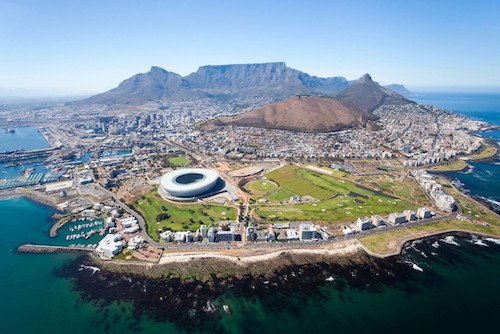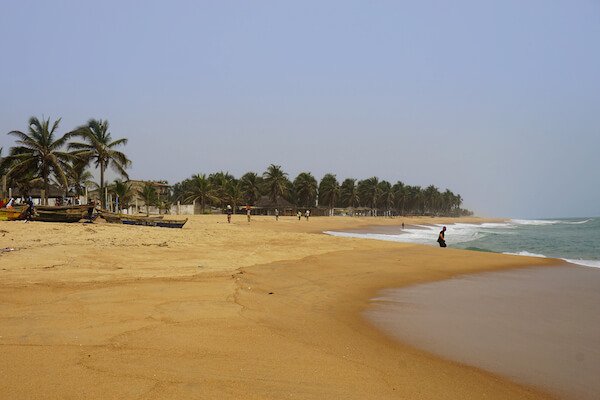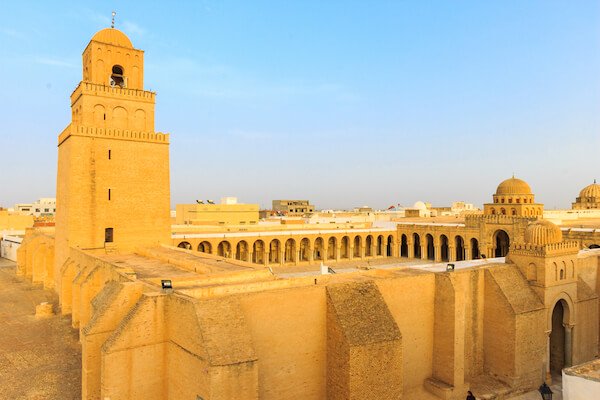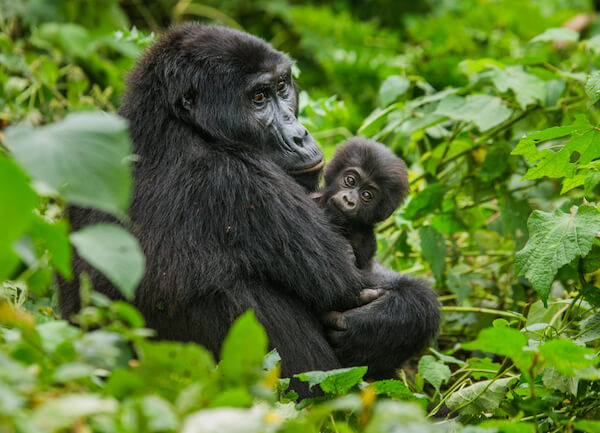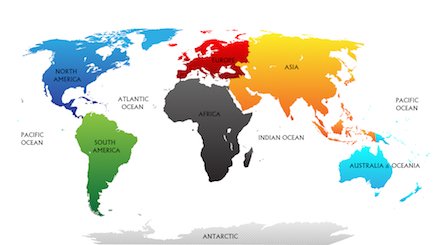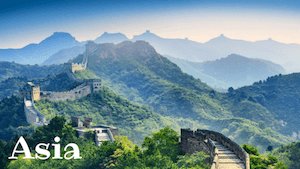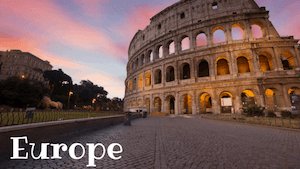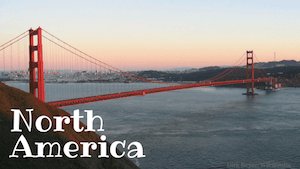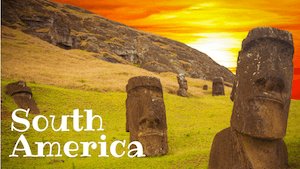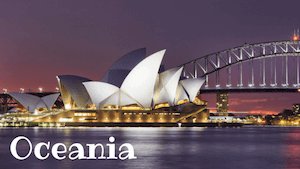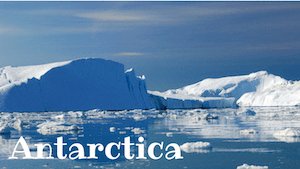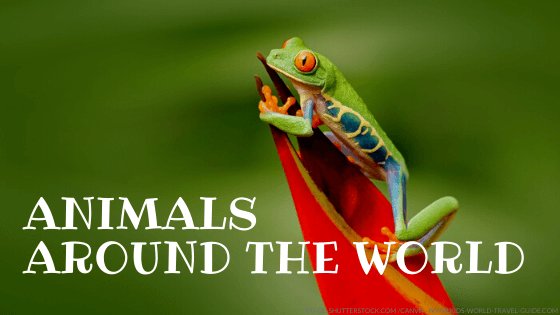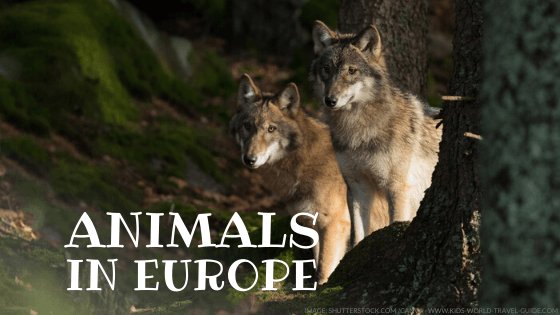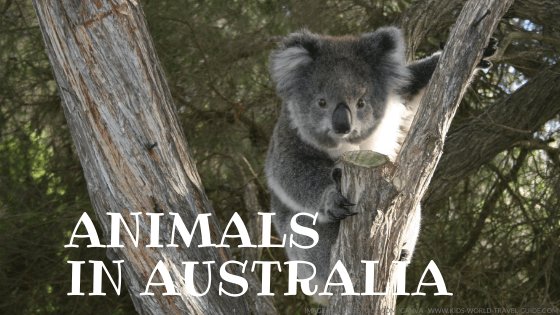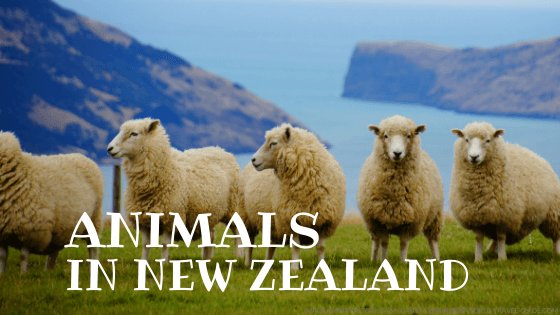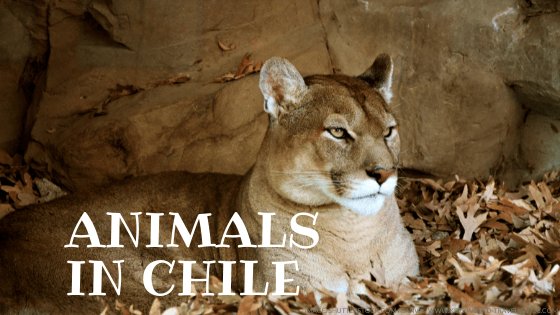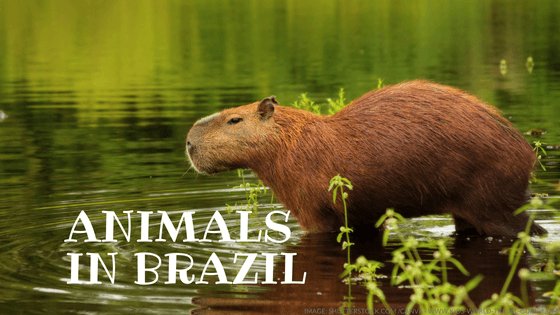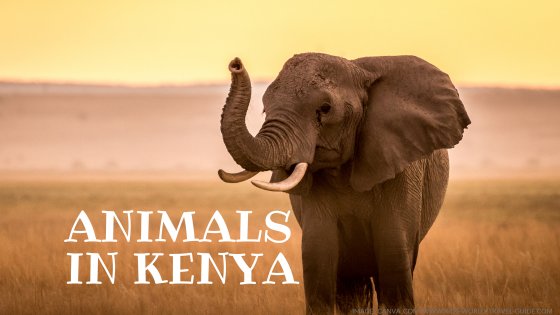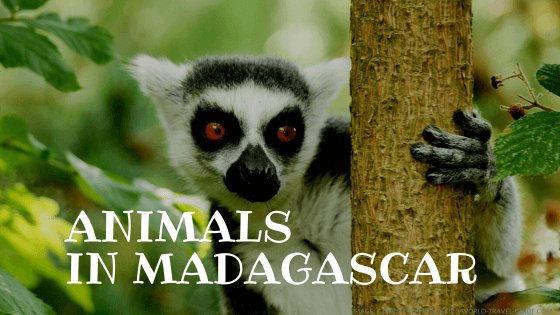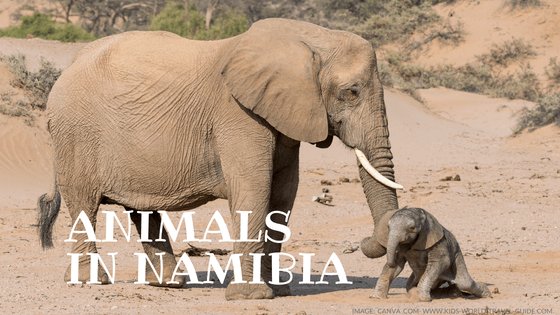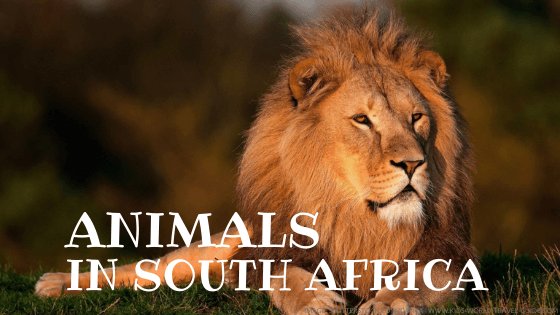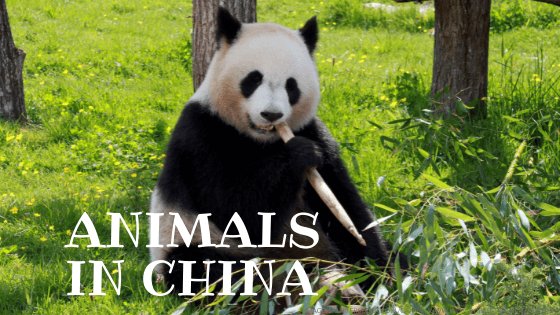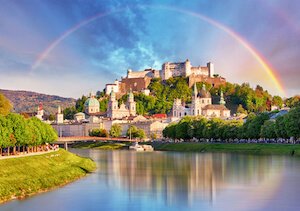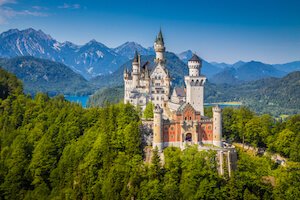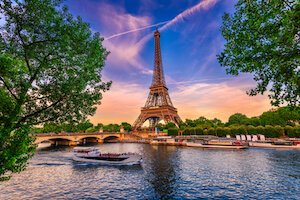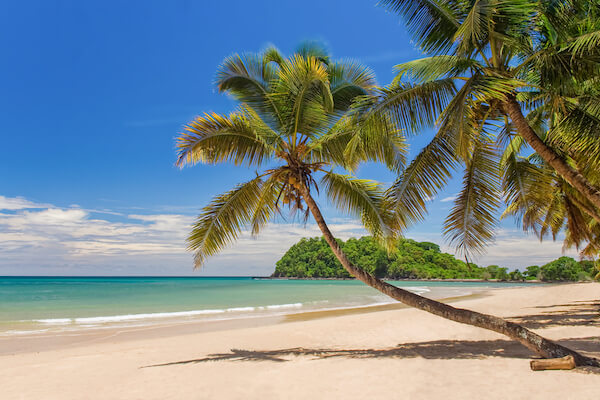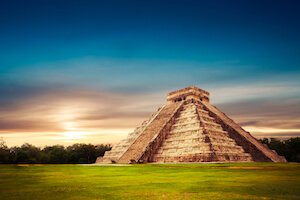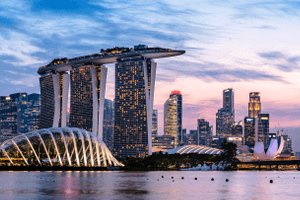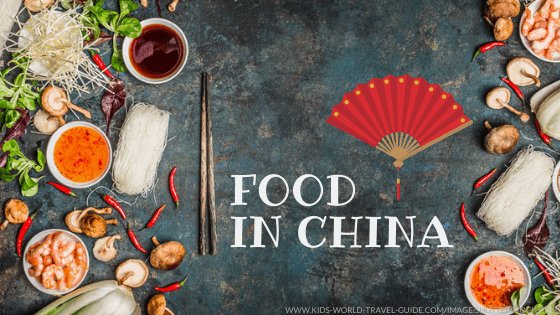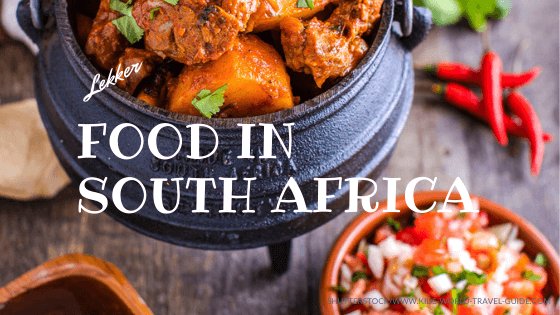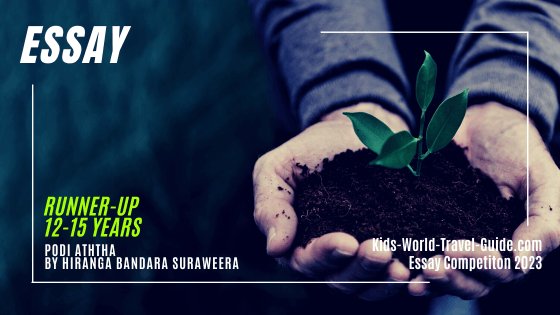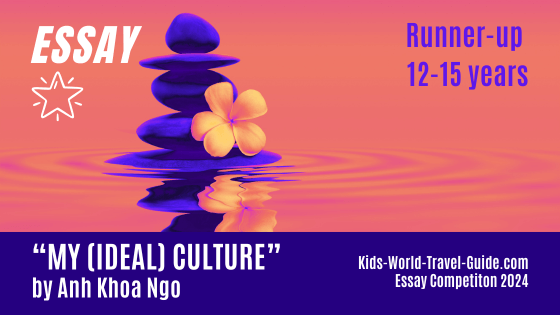Landmarks in Africa

Do you know all these amazing landmarks in Africa? The natural and man-made landmarks and monuments that we show below are well known for their unique locations, awe-inspiring natural features or outstanding design and architecture.
The African continent is huge, housing 57 countries, and has a vast number of attractions and landmarks. There are 144 UNESCO world heritage sites in Africa and many more line up on the 'tentative list'. Here are some of our favourite monuments and famous landmarks in Africa.
Top 15 Landmarks in Africa
The following landmarks were chosen by us because they are famous and popular sites. These man-made and natural landmarks attract thousands of visitors to the African continent each year. All are truly unique and spectacular. Let's make sure that these sites will be respected and preserved for future generations to learn and admire about our wonderful world.
1 | Mount Kilimanjaro
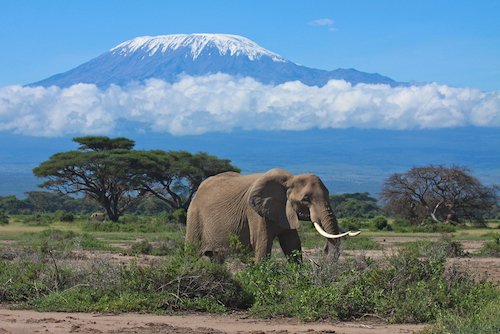
Mount Kilimanjaro is located in Tanzania. Mount Kilimanjaro is the highest free standing mountain in the world and it is also the highest mountain of the African continent.
Africa's highest mountain is a dormant volcano and has three volcanic cones. The highest cone is called 'Kibo' and 'Uhuru Peak' is the highest peak on the volcanic rim of Kibo cone. Uhuru means 'freedom' in Kiswahili.
The highest peak of Mount Kilimanjaro is 5899 m/ 19354 ft high - according to digital measurements in 2014. The mountain belongs to the Eastern Rift mountain range.
2 | Avenue of the Baobabs
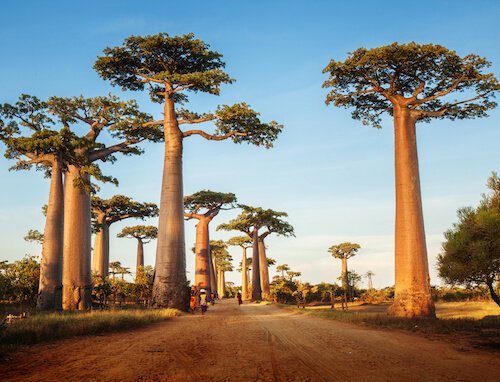 Baobab Alley in Madagascar
Baobab Alley in MadagascarThis alley of baobab trees is named Allée de Baobab in French. This scenic landscape is located in western Madagascar. About 25 huge baobabs trees line a stretch of road about 30 km/ 18 miles to the north east of the city of Morondava.
Baobab trees are endemic to Madagascar and six of the nine baobab species grow only in Madagascar. The majestic trees grow up to 30 m/ 100 ft tall.
Baobab trees are also referred to as 'monkey bread trees' or 'upside-down trees'. The fruits of the tree are called 'monkey bread' and are as big as coconuts. During the nine months of the year when the tree is leafless, from January to September, the branches look like roots sticking up into the sky.
The Baobab tree is often revered as a 'tree of life' as it has many uses: the massive tree provides shelter, food, water and natural medicine, and even the bark can be made into clothing.
3 | The Great Pyramid of Giza
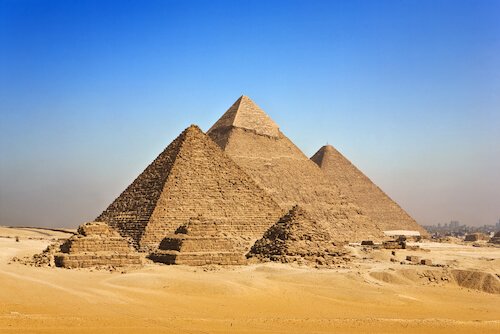 Pyramids in Egypt
Pyramids in EgyptThe Great Pyramid of Giza is the oldest and largest of the three pyramids in a pyramid complex. The pyramids of Giza are located near Cairo in Egypt. The Great Pyramid is also referred to as the Pyramid of Khufu or the Pyramid of Cheops.
The pyramids are thought to be tombs built in 2560 BC for Pharaoh Khufu (also called Cheops). The Great Pyramid includes three chambers: the Queen's Chamber and the King's Chamber as well as one unfinished chamber in the basement. This large pyramid has been built of huge blocks of limestone and granite and is 146 m/ 480 ft high.
The Great Pyramid is the only remaining intact site of the Seven Wonders of the Ancient World. For a long time this was the tallest man-made building in the world and still this is one of the most remarkable ancient man-made structures in the world.
4 | Table Moutain
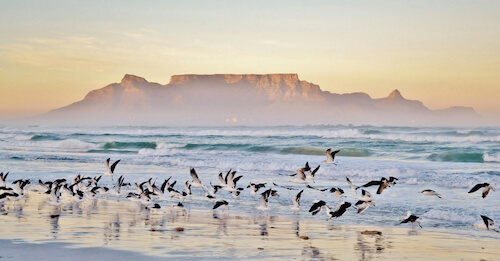 Table Mountain in South Africa
Table Mountain in South AfricaOne of the most iconic and most photographed mountain silhouettes (or profile) is that of Table Mountain in Cape Town/South Africa. Cape Town is the southernmost city on the African continent and located on the Cape peninsula. The flat-topped Table mountain overlooks the city and the Atlantic Ocean. The massive Table Mountain plateau is framed by Devil's Peak to the left and smaller Lion's Head to the right.
Table Mountain's highest peak is 'Maclear's Beacon' with 1086 m/ 3563 ft. The mountain can be hiked up via various steep rocky paths. Since 1929, the mountaintop can also be reached via cableway.
Table Mountain National Park is one of the most biodiverse sites in the world. The unique vegetation in this area forms its own floral kingdom. Over 2285 different plant species are only found in this one of the world's eight floral kingdoms. There are as many different plant species found in the Cape peninsula as in the whole of the UK! More facts about South Africa
5 | Timbuktu
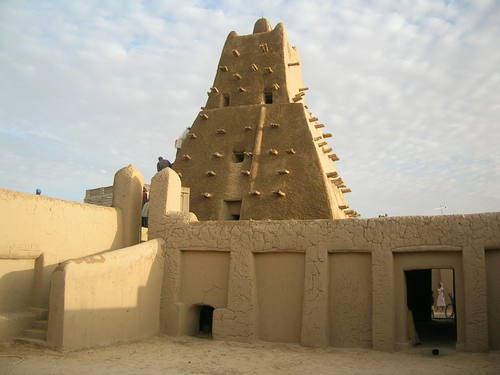 One of the 16 mausoleums in Timbuktu in Mali
One of the 16 mausoleums in Timbuktu in MaliTimbuktu is a city in Mali that is situated on the ancient trade route of the Mali Empire. Timbuktu is located on the southern edge of the Sahara close to the Niger river and is surrounded by sand dunes.
The first settlement of Timbuktu dates back to the 12th century. The city was one of the important Medieval towns where caravans traded desert salt of the Sahara with gold, ivory and slaves from the Sahel region.
In the 16th century the city established an Islamic university and many holy places and thus attracted scholars from across the Islamic world. Timbuktu is a UNESCO world heritage site.
Please note that there is a travel warning against travel to Mali due to potential Islamist terrorist attacks in the country.
6 | Vallée de Mai & Coco de Mer Palms
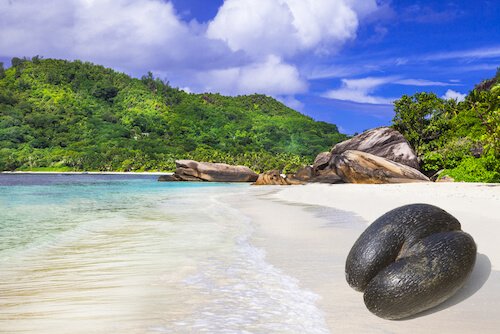 Coco de mer on a beach in the Seychelles
Coco de mer on a beach in the SeychellesThe Vallée de Mai on the Seychelles island of Praslin is another UNESCO world heritage site. This tropical rainforest in the island's interior is known for its palm trees with the huge coco-de-mer seeds. The coco-de-mer palms have the largest seeds of any plants in the world! The seeds can weigh up to 17 kg/ 37 lb.
The Seychelles islands are an archipelago in the Indian Ocean. The islands are made of coral and mostly granite. Giant boulders frame the sandy coves of the islands. Read our Seychelles Facts for Kids here.
7 | Victoria Falls - Landmarks in Africa
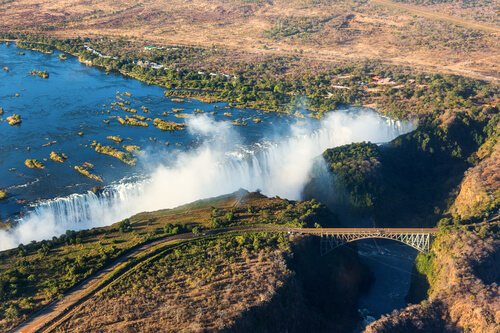 victoria falls
victoria fallsThe Victoria Falls are the world's largest waterfalls during the wet season and one of the Seven Natural Wonders of the World. The waterfalls are referred to as Mosi-oa-Tunya ('The smoke that thunders') by the Zambians. The Victoria Falls are more than 1 700 m/5 600 ft wide and thus wider than the Niagara falls. They are also about twice the hight of the Niagara falls!
In 1855, David Livingstone was the first European who saw the huge waterfalls on the Zambezi River. He named the majestic waterfalls after the Queen Victoria of England.
8 | Basilica of Our Lady of Peace - Landmarks in Africa
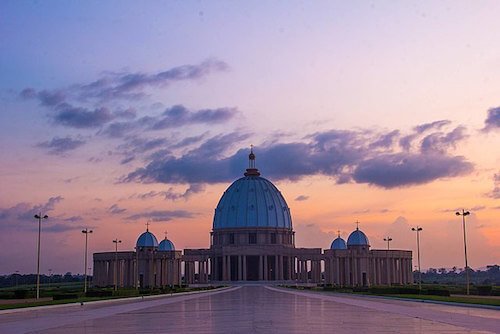 Basilica of Our Lady of Peace in Côte d'Ivoire
Basilica of Our Lady of Peace in Côte d'IvoireThe Basilica of Our Lady of Peace is located in Yamoussoukro in Côte d'Ivoire, which was formerly called Ivory Coast.
The Catholic church was built between 1986 and 1989. This basilica is listed in the Guiness Book of World Records as the largest Christian church in the world! The dome is more than twice the diameter of the Basilica of St Peter in Vatican City. Read more here.
9 | Great Mosque of Algiers - Landmarks in Africa
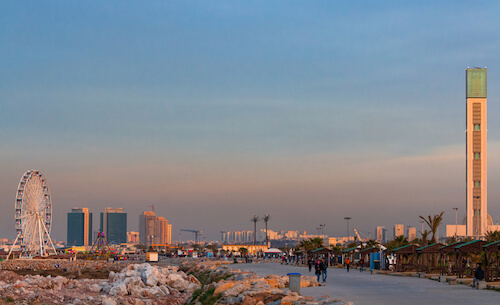 Great Mosque and World's Tallest Minaret in Algeria
Great Mosque and World's Tallest Minaret in AlgeriaThe Great Mosque of Algiers, also called Djamaa El Djazair, is Africa's largest mosque. The mosque in Algeria's capital city Algiers was completed in 2019 after seven years of construction.
The mosque has the tallest minaret in the world and is 265 m/ 870 ft high. The mosque can accommodate 120 000 worshippers and overlooks the Bay of Algiers.
10 | Dunes of the Namib - Landmarks in Africa
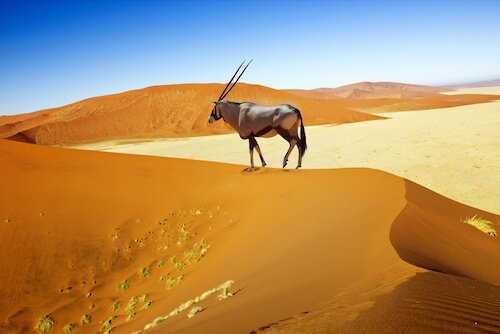 Oryx wandering on the dunes in Namibia
Oryx wandering on the dunes in NamibiaThe dunes of the Namib-Naukluft Nationalpark in Namibia are the highest dunes in the world. They are up to 300 m/ 1000 ft high.
The orange coloured dunes are made of quartz sand that has blown inland from the coastal areas of the desert. The further inland the dunes are located and the older the dunes are, the deeper orange they are due to the higher iron oxide coating of the sand. Read more here.
11 | Nile River - Landmarks in Africa
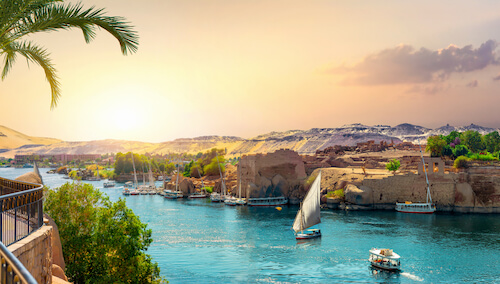 Nile River passing through Aswan in Egypt
Nile River passing through Aswan in EgyptThe Nile is the longest river in Africa and passes through eleven countries in northern and eastern Africa and is the main water source in Egypt and Sudan.
With a length of 6852 km/4258 miles, the Nile is also the longest river in the world. The Nile's river mouth is in Egypt. Most cities and towns in Egypt are located in the fertile Nile Valley. The farmers still plant crops such as maize, rice, wheat, sugarcane, fruits and cotton along the river banks.
The Nile has two sources: The White Nile coming from Lake Victoria in Tanzania and the Blue Nile coming from Lake Tana in Ethiopia.
12 | Lalibela Rock-hewn Churches - Landmarks in Africa
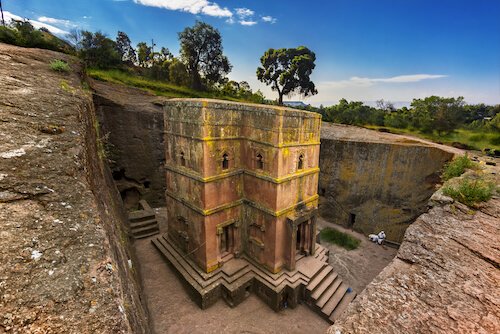 Rock-hewn church in Ethiopia
Rock-hewn church in EthiopiaThe eleven rock-hewn churches in Lalibela are probably the best known attraction of Ethiopia. One of the most well known landmark is the church of Saint George. This church was cut out of one huge block of rock in form of a cross.
The cave churches are located in the town of Lalibela, a mountainous region in northern Ethiopia. King Lalibela initiated the construction of the churches in the 12th century. All these medieval churches were hewn, which means cut and carved, out of rock.
It is said that King Lalibela called the area 'New Jerusalem' as at that time Muslims had stopped the Christians from going on pilgrimage to the Holy Land. Still today, more than 100,000 Ethiopian Orthodox Christians take their pilgrimage to the Lalibela churches every year. Read more about Ethiopia here.
13 | Le Morne Peninsula - Landmarks in Africa
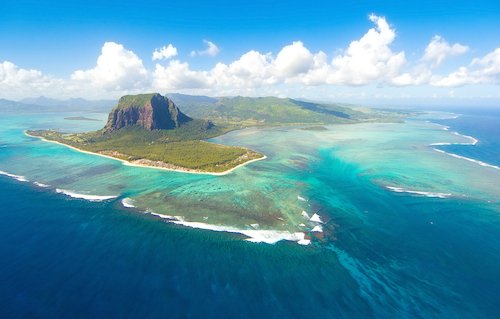 Le Morne Peninsula in Mauritius
Le Morne Peninsula in MauritiusLe Morne Brabant mountain is the most known landmark of Mauritius. The mountain on the southwestern tip of the island is a national heritage site as a symbol of reconciliation and forgiveness. The mountain is famous for providing refuge to slaves who fled from their colonial masters in the late 18th and early 19th century.
Mauritius is a small country in the Indian Ocean to the East of Madagascar. Mauritius once was an important slave trading centre between the African continent and South Asia. Mauritius was first colonised by the Dutch from 1638, then by the French (from 1721) and later by the British until the country became independent in 1968. Read our Mauritius Facts here.
14 | Okavango Delta - Landmarks in Africa
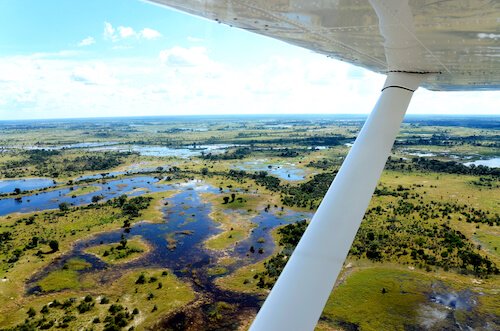 Okavango Delta in Botswana
Okavango Delta in BotswanaThe Okavango Delta is one of the Seven Natural Wonders of Africa. The Okavango Delta is a very flat swampy region in Botswana that has one of the highest wildlife concentrations in the world.
This inland delta is a huge green oasis in the middle of an arid region. The Okavango is a seasonal river, as most of the rainfall occurs between December and March in this region. The river's waters stems mainly from the summer rainfalls in the Angolan highlands.
From March to June the water masses spread into flood plains in the delta. The flood plains create large canals and lakes, islands and swamps. During the dry months of July and August, the water in the delta attracts large amounts of wildlife.
The area covered by flooding is about 250 km by 150 km (155 miles by 93 miles) big and covers roughly the same area as the Great Salt Lake in Utah/USA.
15 | Blyde (Molatse) River Canyon - Landmarks in Africa
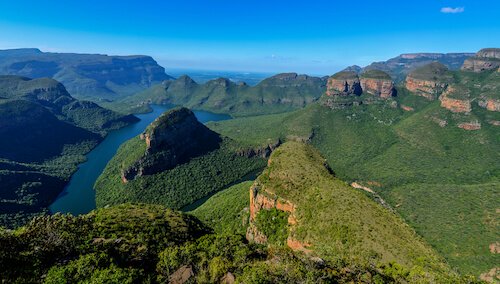 Blyde River Canyon and the Three Rondavels in South Africa
Blyde River Canyon and the Three Rondavels in South AfricaThe Blyde River Canyon is located in the Drakensberg Escarpment in northeastern South Africa. South Africa changed the name to 'Motlatse River Canyon' in 2005. This canyon is known as the largest green canyon in the world.
Molatse River Canyon stretches over 26 km/ 16 miles and is up to 800 m/ 2624 ft deep. There are many attractions in the area such as 'God's Window', the Echo caves or the 'Three Rondavels' which you can see in the image above in the top right.
Blyde means 'happy' in Dutch, and the river and canyon were first named by the early Dutch explorers, so-called Voortrekkers, who settled in the area in the 19th century. Molatse means 'always full' in the local MaPulane language. Read more about South Africa here.
More about the World's Top 10 Landmarks
Popular Pages
Resources - Landmarks in Africa
Resources for Landmarks in Africa page:
- Mpumalanga Tourism and Parks Agency. "Blyde River Canyon." Mpumalanga. Last accessed 24 April 2025
- Deutsche Welle. "Exploring the World's Biggest Church." DW. Last accessed 24 April 2025
- UNESCO. "Timbuktu." UNESCO World Heritage Sites. Last accessed 24 April 2025
- Errol Barnett. "Rock Churches of Lalibela, the Jerusalem of Ethiopia." CNN Travel. 27 June 2013. Last accessed 24 April 2025
- Abdi Latif Dahir. "Africa's largest mosque has been completed thanks to China." Quartz Media. 28 April 2019. Last accessed 24 April 2025
- EarthObservatory. "High Dunes in the Namib Desert." NASA. Last accessed 24 April 2025
Images on Landmarks in Africa: Shutterstock.com and Wikicommons
Landmarks
More Countries in Africa
 Tanzania
Tanzania